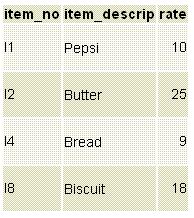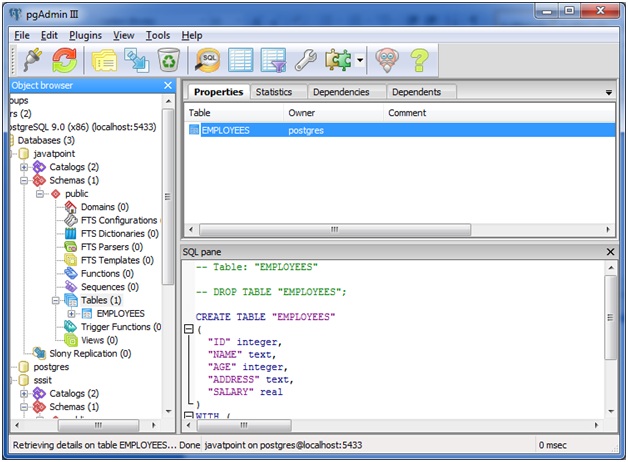The LEFT JOIN is also referred as LEFT OUTER JOIN. The following Venn diagram illustrates how the LEFT JOIN clause works. The intersection is the rows in the A table that have corresponding rows in the B table.
PostgreSQL LEFT JOIN examples. Let’s take a look at the following ER diagram, which is a part of the DVD rental sample database. Left Join With Where Clause. Ask Question Asked years, months ago.
Active years, month ago. ID and NAME columns are from the right side table, so are returned. A JOIN is a means for combining fields from two tables by using values common to each. The Outer Join is an extension of Inner Join. There are three types of Outer Joins.
The common columns are typically the primary key columns of the first table and foreign key columns of the second table. What is a LEFT JOIN exactly? Where an inner join returns only entries that match in both tables, a left join takes all.
I discovered this while debugging a large query, which I below have. It was brought to my attention that the USING construct (instead of ON) in the FROM clause of SELECT queries might introduce optimization barriers in certain cases. Just in more complex cases. Context: this comment to this question. I use this a lot and have never noticed anything so far.
I would be very interested in a test case. INNER JOIN or the WHERE clause of the same SELECT. The result is NULL from the right side, if there is no match.
JOIN clause that’s normally used when fetching data from multiple tables in a SELECT statement. My first questions is: Is it possible to use a WHERE clause in a LEFT JOIN or can I realize this in a SUBSELECT and my second question is: please, can anyone show me the correct syntax for this ;-) my example: SELECT artikel. Learn how to create SQL Joins. The first minutes teach you the basics.
The second minutes show you are few techniques that. Most often, you will provide jOOQ with JOIN conditions in the JOIN. SQL supports a different means of specifying how two tables are to be joined. Instead of a condition, you supply a set of fields whose names are common to both tables to the left and right of a JOIN operation.
Multiple-Table-Spanning Joins with ORs in WHERE Clause. In this case, all tables are listed in the FROM clause and are later connected in the WHERE clause. In my experience, an implicit join is the most commo n way to connect two tab les. However, my observation might be heavily biase because an implicit join is the way I tend to write things in my daily work. An outer join returns all of the rows that the equivalent inner join would return, plus non-matching rows from one or both tables.

In the FROM clause , you can specify left , right, and full outer joins. In the WHERE clause , you can specify left and right outer joins only. The updated SQL standard addressed these issues by separating the join conditions from the WHERE clause. Join conditions now go in the FROM clause , greatly. When filtering the left table of a left join you HAVE to put the filters in the where clause.
This caught me out today at work. The most basic join type is a cross- join (or Cartesian product). The Join clause is used to join two or more tables in spite of using the filtering of Cartesian product. We are joining two tables so in spite of using the Cartesian product and then where condition the direct join clause is implemented in oracle.

The easiest and most intuitive way to explain the difference between these four types is by using a Venn diagram, which shows all possible logical relations between data sets.
Hiç yorum yok:
Yorum Gönder
Not: Yalnızca bu blogun üyesi yorum gönderebilir.